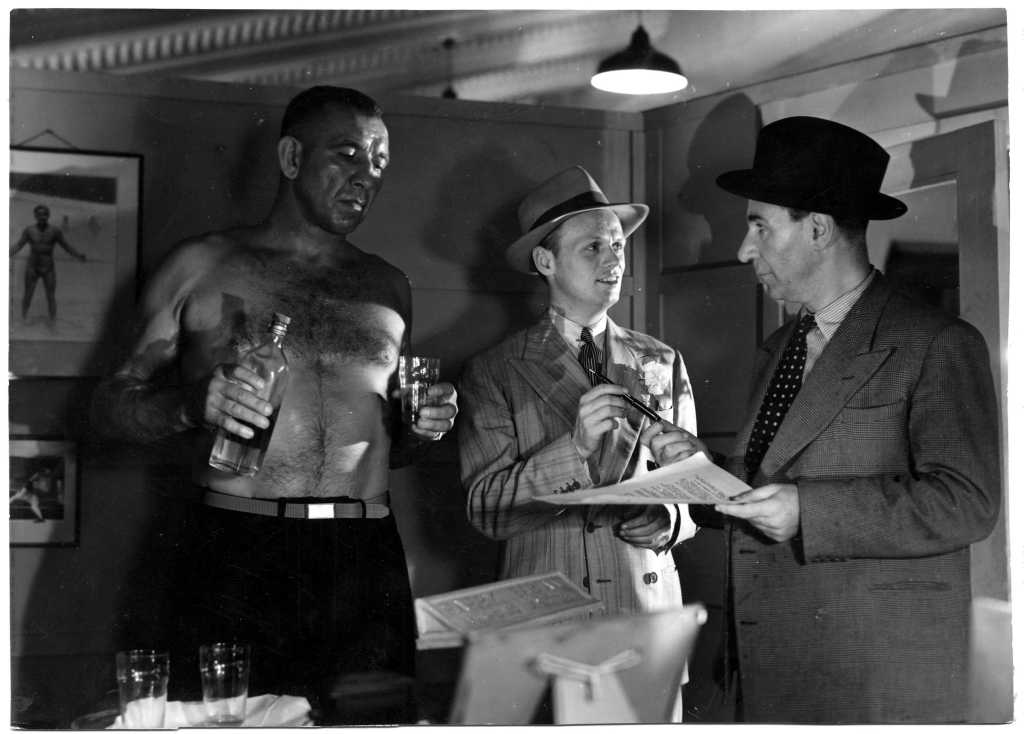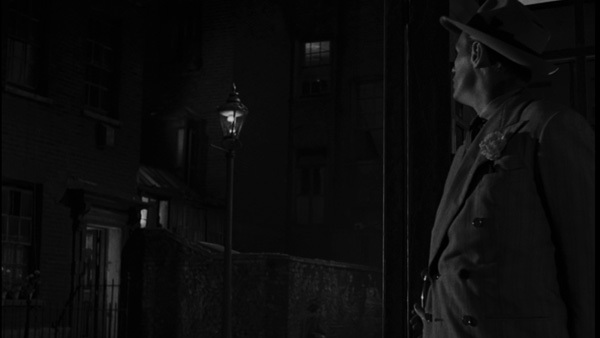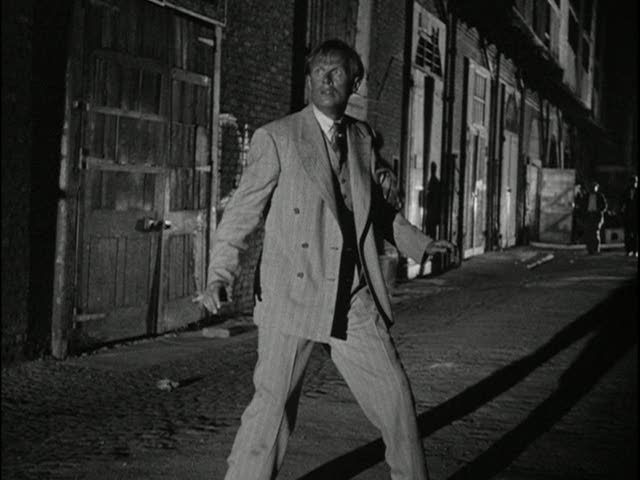Noirvember Review: ‘Night and the City’
It has been said that after a war there is opportunity for the nefarious and unscrupulous. Famed Blacklisted filmmaker Jules Dassin, took viewers into such an environment in the shadows of Post World War II London. Through the eyes of an American hoping to make his fortune in the underworld in 1950 as a stranger in a strange city armed only with a boundless ego in the noir masterpiece Night and the City.
Ever since moving to London, Harry Fabian has been trying to make his wealth using a number of small time grifts which often fail leaving him to rely on his fellow expat neighbor Mary who is still not over a romantic relationship they once shared. He seems to finally catch a break upon a chance meeting with one of the biggest pro wrestling stars in Britain the aging Gregorius the Great, who presents him a lucrative business opportunity. The only problem is that Harry needs needs a financial investor and after he scours all of his contacts in London’s criminal underworld, aid finally comes in the form of the unhappy wife of the aging kingpin Phil Nosseross. While this puts the smooth-talking American in the position to promote the biggest match in London Town, it also puts him between the two warring Nosseross spouses. Complicating matters is London’s biggest promoter (and Gregorious’ own son), the gangster Kristo none too happy about this new kid encroaching into his business much less manipulating his own father for profit. When he is inevitably betrayed by Phil Nosseross and Gregorious dies during a shoot fight at the gym, Harry finds himself on the run as he becomes the target of every criminal in the city hoping to get into the good graces of two powerful bosses. Even in a city as large as London, he can only run so long until it all catches up to him in brutal fashion.
The “City” part of the title Night and the City proves to be a crucial part of this movie’s greatness. Director Jules Dassin immerses the viewer deep in a London a few short years removed from being decimated by German bombs. The once major metropolis is now full of crumbling buildings, dark alleys and debris from the Blitzkrieg; now called home by countless lost, greedy, and scheming people. In the scars of war has sprung up an underground society of thieves, traffickers in stolen goods, counterfeiters, con artists, and overall miscreants. Night and the City is one of the most perfect examples of the bleak urban wasteland archetype of film noir. The film shows that there is a hierarchy with the guys pretending to be disabled vets to scam people near the bottom and the likes of Nosseross and Kristo at the top. Our protagonist Harry is someone who is regarded as being somewhere in the middle, but his delusions of grandeur will not let him settle for this as he has aspirations of making it to the top. Sadly for Jules Dassin, the decision to film to take production across the Atlantic came at a crucial turning point in his career. His skills at making gritty crime flicks meant he had a burgeoning career during the film noir movement making some of the landmark films of the style like Brute Force, Thieves Highway and The Naked City. But while in the United Kingdom the director learned that he had ended up on the dreaded Blacklist. The studio bosses at Fox made it clear he was not even allowed to to oversee the final cut of the movie, forcing him to rely on telegrams, letters, and long distance calls to the editor as well as composer Franz Waxman. Realizing he could never make a movie in Hollywood again, Dassin opted to remain in Europe where he relaunched his filmmaking career with the masterpiece heist movie Rififi.
There are two different cuts of this film available one was made for US audiences and the other for British viewers. According to Jules Dassin the American cut is the one that is closest to his vision for the final product. The British cut softens the relationship between Harry and Mary and even features a different musical score from a British composer over famed Hollywood music-master Franz Waxman. Most importantly the UK edit of Night and the City features an ending that is far less harsh and pessimistic.
As a wrestling fan it is fun to see the way the sport presented in an era when kayfabe was still strongly in effect. Wrestling legend Stanislaus Zbyszko plays the grappler at the center of everything, a grizzled old man who could still draw money through his dedication to wrestling the right way. His strong performance as well as his “protecting the business” as they say, should be applauded. Before there was an NWA, much less a WWE, AEW, or NJPW, Zbyszko was one of the greats in the business becoming a three time World Heavyweight Champion during his career. When casting Night and the City, Jules Dassin went into production envisioning Zbyszko in the role of Gregorius the Great and fought the studio to get him. This trust in the wrestler turned chicken farmer paid off in spades as his performance steals any his scene he is in. In particular his death scene was so powerfully done that, famed tough guy star Richard Widmark was driven to tears when filming it.
Speaking of the film’s cast, you could not go wrong with it’s two leads who are fan favorites among noiristas Richard Widmark and Gene Tierney. Widmark had broken through to stardom just three years earlier as the psychotic hitman Tommy Udo in Kiss of Death. Since then he would go on to play a number of villains and antiheroes across film noir. In Night and the City he proves to be the perfect lead character as a sleazy con man who does not understand his place in the cold world of London’s criminal underworld and it ends up biting him in the face. There is little redeemable about Harry Fabian, he is manipulative, greedy, and arrogant, but Widmark’s charisma makes him absolutely captivating as one of the great noir antiheroes. In contrast to every other character in this dark film filled with pessimism and greed, Tierney plays the only good and decent character in the entire picture. She joined the cast as a favor to studio boss Darryl Zanuck, who felt sympathy for the starlet who had done so much for 20th Century Fox and was now battling the demons of mental illness and a failed relationship. With only a few minutes of screentime, the legendary actress proves completely indispensable to the plot. She is the necessary good who gives Harry a shred of undeserved hope.
Serving as the final American work of the great Jules Dassin Night and the City is a masterpiece of film noir and the perfect closing in this chapter of his storied career. A visionary director who left a powerful mark on the film noir movement it is fitting that he got to wrap things up in the shadows before continuing his career in Europe. This is a particularly bleak and pessimistic movie, and the dark tone of the subject material echoes visually in the urban wasteland setting.




